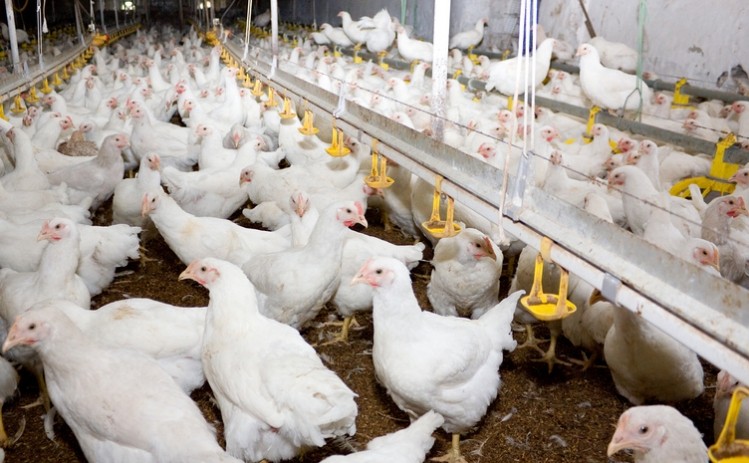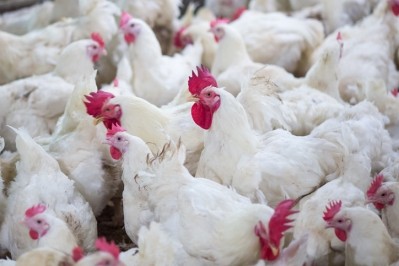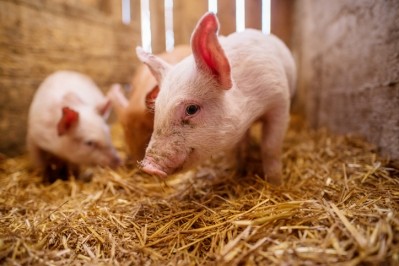Reports from IPPE
AB Vista turns to microbiome development with dual-action product release

The UK-headquartered animal nutrition technology company officially released the combined xylanase and fermentable xylo-oligosaccharides (XOS) product, Signis, at the International Production and Processing Expo (IPPE) in Atlanta.
In broiler chickens, feed additives, including prebiotics, are widely used to improve gut health and to stimulate performance. Xylo-oligosaccharides (XOS) are hydrolytic degradation products of arabinoxylans that can be fermented by the gut microbiota.
The product grew out of work the company was doing to better understand how some of its enzymes were functioning and efforts to improve the consistency in results, said Mike Bedford, research director with AB Vista.
“If you look at NSP-ases, xylanase, glucanase, mannanase – any of the products that are out there for the treating of corn or wheat or barley – the result, in wheat and barley, is often very consistent - you feed it and you get a nice response,” he told FeedNavigator. “In corn, it’s not so consistent, sometimes you get a response, sometimes you don’t.”
The work to understand the response variation with a corn-based diet led to the development of the combined xylanase and fermentable xylo-oligosaccharides (XOS) product, he explained.
“We used to think that xylo-oligosaccharides were simply a substrate and they made the butyric acid and the butyric acid fed back to the gizzard,” he said. “But what we realized was, when we fed the xylo-oligosaccharides, or even when we fed the xylanase, was we weren’t producing anything like enough of the butyric acid from the amount that we were feeding to deliver that response.”
The xylo-oligosaccharide provide an “appetizer” for bacteria, which prompts them to generate xylanase, said Bedford. “It actually stimulates the bacteria to turn into a microbiome or bacterial species set which can degrade the fiber in corn,” he added.
“It’s a really interesting sort of slow, steady development of a microbiome capable of degrading the fiber that is in the diet, that’s always been in the diet and would ordinarily be thrown out the backend,” he said. “We’re calling it a dual-action effect because the xylanase is making the xylan tastier and the xylo-oligosaccharides are informing the bacteria you really should be producing xylanases because xylo-oligosaccharides are a signal that xylan in the ceca.”
Over time, product use is intended to train the animal’s microbiome to be more effective at fermenting the fiber in the diet, he said. “In some corns, we were never producing the xylo-oligosaccharides loud enough or with a big enough signal to make the microbiome go, ‘Oh there’s them xylan out there.”
The response was different when the enzymes were used with wheat-based diets because it generates a louder signal, he added.
Key learnings along the development process
To develop the combination product, researchers examined the three mechanisms traditionally used to explain how an enzyme-based product works, including viscosity, cell wall degradation and prebiotic effect, he said.
“Viscosity is a good mechanism for describing the problems in wheat, barley [and] rye, but it doesn’t really describe what’s going on with corn-soy diets,” he said. “Because of the way that structures in corn dissolve, they don’t dissolve into these big long structures at all … there’s very little viscosity in corn, so viscosity is not a mechanism that can explain why our enzyme is working poorly in corn.”
The cell walls of many cereal grains are comprised of materials that a monogastric animal does not produce enzymes to digest, he said. The thought was that if you added enzymes like xylanase or glucanase to an animal’s diet it would break up the cell walls and release the encapsulated nutrients.
“After all the work we’ve been doing, we don’t think that mechanism has any validity at all,” he said. There have been several studies where an enzyme is fed and then contents are removed from the gut of a chicken where those cell walls have been degraded so the process appears to be happening, he added.
“But we know from in vitro work that we don’t have the time and we don’t use anywhere near enough enzyme to break those cell walls apart,” said Bedford. “So it’s happening in the animal, but it’s certainly not a direct effect of feeding the enzymes, they’re not directly breaking those cell walls down.”
The understanding of mode of action now is that the enzymes are attaching to cell walls but instead of punching holes, they are breaking off small fragments of the wall, he said. These oligosaccharides provide a food substrate for bacteria, which ferment them.
“The xylanase is playing a role in the corn; it’s attacking the cell surface, it’s not releasing oligosaccharides, but it’s taking really, really strong cell walls and it’s nicking them, breaking them,” he said. “These nick points, breakpoints are where bacteria attach to – the xylanase is making the substrate more attractive to bacteria if they could only metabolize the xylan and the xylo-oligosaccharides are going to the bacteria and training them to use the xylan as a substrate.”
The combination product is stable and intended to be fed throughout the production cycle, said Bedford.
Further research
The company is working to understand any other potential health improvements from its use, he said.
In research trials looking at feed conversion, there tends to be some variation in when improvements start to be seen, he said. “It comes down to the complexity of what’s growing in the gut of the bird in the first place,” he added.
In swine, the development process also can take some time, he said. “We’re finding that once you get to about 50 kilos, you start to see a difference between the enzyme-treated and the non-enzyme-treated animals and it gets bigger and bigger the longer you feed them,” he added.
The microbiome is complex:
“It’s not what is s there, but what they do that counts,” he said. “That’s why our xylo-oligosaccharides are there, to try to encourage, to get the good guys in place, and make them grow quicker than everybody else.”
“Our training mechanism works regardless of where you start from, but in some cases, it takes longer than others, because you just don’t have a good starting point,” he added.
However, one caution is that because the feed additive works with the microbiome any change in the use of a medicated feed additive may disrupt the development process, he said. “If you’re going to go on drugs stick to one – don’t go mixing and matching,” he added.
Market entry
The feed additive is being initially released for use in poultry and swine in the US, Europe, New Zealand, Australia, India and Canada and work on regulatory approvals in Mexico have started, according to company information.
Eventually, it will see global release, but the rollout process is informed by regional regulation.















